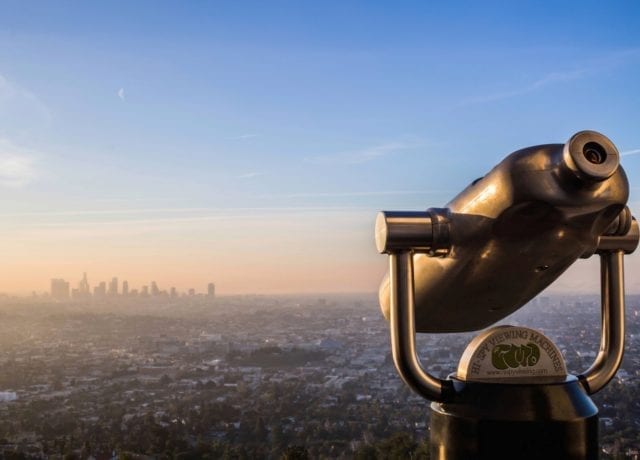B2B marketers use advertising for audience
Although advertising is always changing, it remains a key tool in the B2B marketer’s arsenal alongside drip campaigns and personalized landing pages.
As an ad sales

1. Native Advertising Takes Over
B2B brands continue shifting their budgets from tried-and-true traditional formats to digital ones. This likely has to do with the value online advertising offers. While data is typically thought to drive programmatic advertising, online insights can guide B2B advertisers to smarter direct marketing efforts.
Said another way, they simultaneously allow for a bigger and more targeted reach.
Changing buying behaviors brought on by the pandemic—only about 20% of B2B buyers said they hoped to return to in-person sales after the pandemic—will continue to put a premium on digital formats.
But times are changing, and run-of-the-mill digital ads don’t shine as brightly as they used to.
The downfall of third-party cookies and shifting sentiment around ads mean that B2B advertisers can’t blindly throw ads online.
This is why native advertising will continue to gain steam in 2023.
In 2022, eMarketer predicted a 14.9% YoY increase in native display ad spending, with most of it going to mobile devices and social media platforms.
These ad formats—offered across the digital advertising world—deliver a more natural experience, a big reason why they’re so successful; 68% of consumers trust native ads seen in an editorial context, compared to 55% for social media ads.
Similarly, branded content studios will prove invaluable; their native feel and access to niche audiences will be too much for B2B advertisers to ignore.
2. Events Are Back
After taking a pandemic-induced break, in-person events are back, and B2B advertisers are excited.
By the second half of the year, almost half of the respondents to a survey sample said they’re “extremely likely” to return to in-person events—and that’s far from surprising.
According to Bizzabo, 87% of B2B marketers say in-person events are a critical component of their company’s success. Meanwhile, 85% of leadership (senior managers, executives, and board members) believe in-person events are important to their company’s success.
With events on their way back, B2B advertisers will look to them as an opportunity to regain authentic connections with leads and prospects they lost.
That said, virtual (and hybrid) events are unlikely to go away as B2B marketers look to connect with their total addressable market (TAM) without having to spend thousands on in-person events (booths, travel, printing, etc.). True adoption, however, will largely rely on industry players coming together to perfect software solutions that make virtual and hybrid events possible.
3. Podcast Advertising Grows
With 79% of the U.S. aware of podcasts—and a growing percentage of them highly engaged—podcast ads are poised to become an even bigger medium for B2B advertisers.
More on the nose for the B2B advertisers, research shows that podcast listeners tend to be educated and affluent.
B2B marketers are embracing the trend in a couple of ways:
- B2B brands are buying ads on existing podcasts. This allows marketers to reach an already engaged and niche audience actively paying attention. According to NPR CEO Gina Garrubbo, B2B brands make up one of their biggest advertiser categories.
- B2B brands are creating their own podcasts. These “branded podcasts” give B2B brands interested in content marketing a new medium. Creating a podcast takes more of an investment than a blog
post, but it also likely leads to higher levels of engagement. Examples include Rise & Grind (ZipRecruiter), Masters of Data (Sumo Logic), and Luminaries (DELL).
The ongoing adoption of podcasts certainly has B2B advertisers’ attention, but so does the proven impact of the actual ads, namely, the ones read by hosts. Host-read ads give B2B advertisers an authentic and relatable way to connect with niche audiences.
A study from Nielsen found that host-read podcast ads were “significantly more likely to be described by respondents as authentic and believable, and less likely to be felt as forced.”
4. Out-of-Home Advertising (OOH) Expands
OOH advertising is up across the board; OOH advertising revenue increased by nearly 30% in the second quarter of 2022 compared to the previous year, accounting for more than $2.6b.
Many B2B brands are running these ads and will continue to do so in 2023. From airports to cabs and the subway, B2B advertisers are getting their messaging across during your morning commute.
“While OOH may appear ‘old-school’ on the surface, exciting new OOH placements and integrated geolocation data have transformed the medium into a sophisticated outlet for savvy marketers,” explains Vector Media, a creative agency.
For example, location data allows advertisers to target the initial ad placement and retarget people who have been close to the ad on mobile or web platforms. It’s the natural next step in bringing together the physical and the digital in B2B advertising.
Here’s an example from The Trade Desk (TTD):

TTD’s campaign tapped into OOH advertising to reach brands, media agencies, and commuters in major metro areas. The campaign, “What Matters,” delivered programmatic OOH ads on digital panels on bus shelters, newsstands, elevators, and lobby screens. Additionally, the campaign included connected TV (CTV), YouTube, and online video ads.
OOH, especially of the digital variety, will remain top of mind among B2B advertisers as they fight to find respite from some crowded online ecosystems and prepare for a world without third-party cookies.
B2B Advertisers Fight to Stand Out in 2023
B2B advertising hasn’t always been “cool.”
Historically, B2B advertisers have defaulted to traditional channels, like print and TV, to get their message across. If they did enter the digital world, their journey was often limited to LinkedIn.
But as the B2B world grows and the competition intensifies, advertisers are spreading their wings.
As they do so, they’re adopting the latest and greatest the digital advertising ecosystem has to offer. In 2023, that means native ads, events, podcasts, and OOH.
For more insights, sign up for MediaRadar’s blog here.



